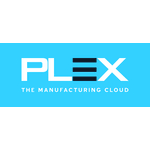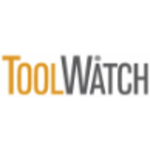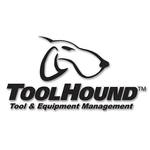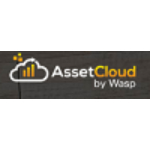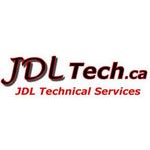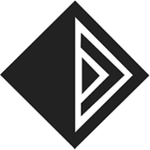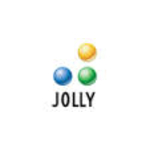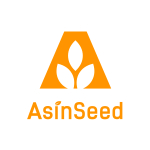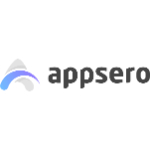TechnologyCounter provides genuine, unbiased real user reviews to help buyers make informed decisions. We may earn a referral fee when you purchase through our links, at no extra cost to you.
List of 15 Best Tool Management Software
Showing 1 - 15 of 23 productsPlex ERP is a software that helps businesses streamline their operations and increase efficiency. With its intuitive interface features, Plex ERP is the go-to solution for companies looking to optimize their processes and achieve maximum productivity...Read Plex ERP Reviews
ToolWatch is a solution for managing your construction tools and equipment. Say goodbye to lost or damaged equipment, wasted time and money. With ToolWatch, you can easily track, organize, and maintain your inventory for maximum efficiency and produc...Read ToolWatch Reviews
EZOfficeInventory is a complete solution to efficiently manage your organizations assets. With its user-friendly interface and powerful features, EZOfficeInventory simplifies inventory tracking and streamlines asset management processes. Say goodbye...Read EZOfficeInventory Reviews
CHEQROOM is a equipment management software designed to streamline your inventory tracking process. From studios to warehouses, our user-friendly platform helps businesses all over the world keep track of their valuable equipment with ease. Say goodb...Read CHEQROOM Reviews
ToolHound, the ultimate inventory management solution for streamlining your equipment tracking and maintenance processes. With its intuitive interface and customizable features, ToolHound helps businesses of all sizes efficiently manage their tools a...Read ToolHound Reviews
AssetCloud is a and innovative software designed to streamline your asset management processes. With its user-friendly interface features, AssetCloud offers a reliable is a solution for tracking, organizing, and maintaining your valuable assets. Say...Read AssetCloud Reviews
LineWorks, is a solution for managing your production line processes. Our software offers advanced features tools to streamline operations and boost productivity. With LineWorks, you can efficiently track and monitor tasks, resources, and workflows,...Read LineWorks Reviews
Tool Hawk is a software solution for all your business needs. With its user-friendly interface features, Tool Hawk simplifies complex tasks and boosts productivity. Say goodbye to manual processes and hello to efficiency with Tool Hawk. Upgrade your...Read Tool Hawk Reviews
ToolQuote is a software for streamlining your quoting process. Say goodbye to manual calculations and hello to accuracy and efficiency. With ToolQuote, generating quotes has never been easier. Boost your productivity and impress your clients with jus...Read ToolQuote Reviews
XPressTools is a software that streamlines your workflow and boosts productivity. With its advanced features and user-friendly interface, XPressTools is the perfect tool for professionals looking to maximize their efficiency. Say goodbye to cumbersom...Read XPressTools Reviews
Asset Track is an efficient and user-friendly software designed to simplify and optimize asset tracking processes for businesses of all sizes. With its advanced features interface, Asset Track provides a seamless solution for managing and monitoring...Read Asset Track Reviews
AsinSeed is a software designed to boost your Amazon product rankings and drive sales. With its advanced features and intelligent algorithms, AsinSeed is a tool for any seller looking to dominate the competitive world of e-commerce. Get ready to expe...Read AsinSeed Reviews
SurveySensum is a tool that helps businesses gain valuable insights and make data-driven decisions. With its user-friendly interface features, SurveySensum simplifies the process of collecting, analyzing, and interpreting data for businesses of all s...Read SurveySensum Reviews
Appsero is a and innovative software solution designed to streamline WordPress plugin and theme development. With its advanced features and user-friendly interface, Appsero simplifies the process of managing, deploying, and analyzing WordPress produc...Read Appsero Reviews
CribMaster is a solution for managing and streamlining your inventory and supply chain processes. With state-of-the-art features and user-friendly interface, CribMaster ensures efficient inventory tracking and reduces operational costs. Get ready to...Read CribMaster Reviews
- What Is Tool Management Software?
- Top Reasons Why Businesses Need Tool Management Software?
- What Are the Top Key Features of Tool Management Software?
- What Are the Top Benefits of Tool Management Software?
- What Are the Steps to Choose the Right Tool Management Software?
- What Are the Types of Tool Management Software for Different Industries?
- What Are the Technology Trends for Best Tool Management Software?
- What Are the Deployment Options for Tool Management Software?
What Is Tool Management Software?
Tool management software is a computer software specifically developed to facilitate the organization and administration of the various tools at the disposal of a business or organization.
The best tool management software offers a structured method for categorizing and managing information pertaining to every tool within the inventory of the company. This includes details such as the instrument's dimensions, classification, and available quantity.
Additionally, it monitors the utilization and state of each instrument, while documenting any instances of maintenance or repairs. Tool management systems facilitate rapid retrieval of inventory information, streamlined procurement of new tools, and precise monitoring of expenses related to tool utilization.
Tool management software has the capability to generate comprehensive reports pertaining to inventory turnover, levels of utilization, and expenses associated with usage. The utilization of these reports has the potential to enhance operational efficiency, leading to cost reductions and heightened profit margins.
Furthermore, the utilization of tool management software can effectively ensure adherence to safety protocols by identifying tools that may require maintenance or replacement.
Additionally, it facilitates the streamlined coordination of tool-related processes, encompassing shipping, storage, and maintenance.
Tool management systems is a valuable tool for businesses and organizations as it enhances the utilization and maintenance of their tools. This software facilitates inventory management, cost reduction, and the optimization of operational efficiency.
Top Reasons Why Businesses Need Tool Management Software?
1. Tool management software is a valuable tool that enhances the efficiency and productivity of workers by effectively monitoring the whereabouts of essential tools and facilitating convenient access for workers.
2. Additionally, best tool management software offers a centralized system for monitoring the life cycle of tools, encompassing their most recent usage, as well as the necessary calibration and maintenance schedules.
3. Tool management systems is an effective solution for mitigating the issue of lost items by facilitating the centralized tracking of tools. This centralized approach not only minimizes intervention time but also eliminates waste.
4. Additionally, maintaining an organized workstation facilitates efficient access to necessary goods for workers.
5. Tool management software also provides real-time inventory control, enabling organizations to maintain constant awareness of their available stock and promptly replenish tools that have been utilized.
6. The best tool management software has the capability to exhibit accountability by identifying the individuals accountable for the tools and tracking their usage. Additionally, it facilitates the convenient scheduling of maintenance tasks for equipment that necessitate regular repair.
7. The implementation of this practice guarantees that every worker is provided with appropriate tools and utilizes them in a proper manner, hence reducing the likelihood of accidents resulting from wrong tool usage, as well as inadequate storage or maintenance.
8. Additionally, it facilitates convenient retrieval of pertinent information regarding the tools, encompassing operational guidelines, technical specifications, and other relevant details.
9. Tool management systems has the capability to provide valuable insights on potential cost savings through the provision of data on tool usage and tracking. This feature can effectively contribute to waste reduction and the elimination of excessive tool purchases.
10. The program additionally contributes to the mitigation of downtime by promptly detecting instances where tools are nearing the requirement for repair, hence enabling the implementation of preventative maintenance measures to minimize unforeseen interruptions and service disruptions.
11. In addition, best tool management software facilitates the monitoring of tool longevity and enables businesses to strategically schedule replacements. Furthermore, it enables organizations to analyze the expenses associated with purchasing, leasing, or renting tools, thereby optimizing overall expenditure.
12. The implementation of automated systems for tasks such as tool procurement and return can lead to enhanced precision and cost reduction throughout various corporate operations.
13. The software has the capability to enhance enterprises' visibility into the movement of their tools, enabling them to effectively monitor the use patterns, including the identification of users, timing, and locations.
14. Tool management software provides a convenient method for monitoring the compliance of all tools with safety laws and other relevant guidelines.
15. Lastly, Tool management systems is imperative for firms to mitigate employee theft of tools by maintaining vigilant surveillance over their inventory and possessing the capability to promptly detect and retrieve any missing items.
What Are the Top Key Features of Tool Management Software?
The top key features of tool management software include:
1. Asset Management: This functionality allows users to effectively oversee and sustain equipment over its entire lifespan, while also being able to monitor the whereabouts, state, service record, and usage metrics of each individual asset.
2. Automated Invoicing: The best tool management software enables users to efficiently generate and dispatch invoices, hence streamlining the administrative process of creating and executing precise bills for customers.
3. Automated Maintenance Planning: This functionality facilitates the automated generation of maintenance plans and schedules for preventive maintenance, enabling users to proactively anticipate maintenance requirements and strategically plan for them.
4. Inventory Tracking: This functionality enables users to effectively monitor and manage the whereabouts and quantity of various minor components, tools, and supplies.
5. Work Orders: This feature allows users to easily create, dispatch, and track work orders. 6. Labour Management: This functionality allows customers to monitor personnel attendance, work schedules, skill sets, as well as cost rates and expenditures.
7. Project Management: Tool management systems functionality enables users to strategize and evaluate the utilization of resources, monitor projected expenses, and oversee project schedules and objectives.
8. Security and Data Protection: The best tool management software functionality ensures the security of data and mitigates the risk of unwanted access.
9. Online Support: This functionality offers users immediate access to online expert assistance and efficient resolution of technical difficulties.
10. Real-Time & Graphical Reports: This functionality offers customers real-time and visualized data that facilitate the prompt interpretation of patterns in equipment utilization, expenditure, and efficiency.
What Are the Top Benefits of Tool Management Software?
1. Increased Efficiency: Tool management software enhances operational efficiency by optimizing the workflow associated with the tracking, accessing, and utilization of tool stocks. This facilitates expedited and simplified retrieval of tools and data.
2. Improved Accuracy: The best tool management software enables managers to effectively monitor the availability of tools, hence mitigating the risk of erroneous tool checkouts and inventory stocking.
3. Asset Preservation: Tool management systems has the potential to enhance the durability of assets by effectively monitoring the utilization, state, and upkeep of tools.
4. Improved Safety: Tool management software can additionally contribute to the fulfillment of safety criteria through facilitating comprehensive inspections and precise asset management.
5. Cost Reduction: The best tool management software streamlines operations by eliminating unnecessary processes and effectively mitigating the time and costs involved with inventory management.
6. Improved Visibility: By possessing a complete understanding of various tools, managers are better equipped to make informed decisions on asset spending and procurement.
7. Enhanced Mobility: The utilization of mobile and cloud-based tool management software facilitates the retrieval of records from any geographical place.
8. Promotion of Employee Accountability: By utilizing a tracking system to monitor the individuals responsible for borrowing specific tools, the software can additionally facilitate the enforcement of employee responsibility in conducting regular inspections of instruments and engaging in other preventive maintenance tasks.
What Are the Steps to Choose the Right Tool Management Software?
1. Conduct an investigation into the various sorts of tool management software that are currently accessible and ascertain the essential features that align with the specific requirements of your organization. Please take into account various features such as inventory tracking, tool calibration, diagnostics and preventative maintenance, rules-based ordering, and reporting capabilities.
2. Conduct an evaluation of the vendors operating in the tool management sector in order to analyze their respective characteristics and ascertain their capability to fulfill your requirements. Inquire about the customer service and support skills of vendors.
3. Acquire budget authorizations and ascertain the enduring expenses linked to prospective software.
4. The first step in the process is to carefully choose a software vendor that aligns with the organization's needs and requirements. Once a suitable vendor has been selected, the next step is to develop a comprehensive implementation strategy.
This plan will outline the necessary steps and actions that need to be taken in order to successfully integrate the chosen software into the organization's existing systems and processes. It is imperative to consider the inclusion of potential setup expenses, personnel requirements, training costs, and data migration.
5. The Tool management systems should be deployed and users should receive comprehensive training to ensure their familiarity with its features and processes. Conduct a comprehensive evaluation of the software to ascertain its alignment with the specific requirements of your organization.
6. Continuously monitor the tools management software usage to ascertain its adherence to proper utilization. Conduct a comparative analysis between the observed performance and the anticipated outcomes, and implement any requisite modifications or adaptations.
What Are the Types of Tool Management Software for Different Industries?
Tool management software refers to a category of software designed to facilitate the management, tracking, and optimal utilization of tools within various industries. The prevalent categories of tool management software are outlined below:
1) Inventory Management Software: This particular program facilitates the management of tools and materials utilized across several sectors. This system allows users to monitor and manage all assets within the inventory, encompassing details such as number, location, and utilization. The platform effectively facilitates the organization of various resources from disparate websites and offers up-to-date information on stock levels.
2) Maintenance Software: This particular program is commonly employed inside various industries, including engineering, manufacturing, and maintenance. The inclusion of capabilities such as asset performance tracking, maintenance activity scheduling, maintenance tracking, and other associated administrative chores aids in the optimization of maintenance procedures.
3) Quality Control Software: Quality control software is employed across diverse industries to uphold the quality of products and operations. Quality control software enables organizations to enhance quality by monitoring and documenting the performance of products and processes, thereby facilitating the identification and resolution of problems and concerns.
4) Asset Tracking Software: Asset tracking software is a technological solution that facilitates the monitoring and administration of various tools and equipment. This feature holds significance for sectors characterized by a substantial quantity of assets, as it facilitates expedited identification and utilization of appropriate instruments for various tasks.
5) Security Management Software: Security management software is specifically engineered to ensure the protection and safeguarding of tools and other assets. Monitoring all activities associated with the asset and securely storing the data is beneficial.
In general, a wide range of tools management software solutions exists, which find use in various industries for the purpose of monitoring, managing, and enhancing efficiency and safety.
What Are the Technology Trends for Best Tool Management Software?
In recent years, there has been a quick evolution in technology trends pertaining to the optimal management software for tools. Several trends can be seen, which encompass the following:
1. Cloud-based access: The popularity of cloud-based software applications is on the rise as a result of its capacity to offer customers access to a comprehensive range of services from any device. This facilitates enhanced collaboration, distant accessibility, and up-to-date data.
2. Automation: The implementation of automation in the administration of tools facilitates the streamlining of operations and the mitigation of errors associated with tedious jobs. Automation also facilitates the allocation of staff members' time towards tasks that are more productive and provide greater value.
3. Real-time Data: In order to assure precise inventory inspections, stock tracking, and utilization, it is imperative for tools management software to offer real-time data.
4. Security: Like any other software program, tool management software should prioritize security. This encompasses recommended methodologies such as the implementation of two-factor authentication, the utilization of data encryption techniques, and the adoption of data loss prevention measures.
5. Productivity tracking: In addition to its primary functions, tools management software should incorporate features that enable the tracking of productivity, so ensuring optimal and effective utilization of instruments.
What Are the Deployment Options for Tool Management Software?
The deployment options for tool management software exhibit variability based on organizational preferences and the specific tool in question. These alternatives can be broadly categorized into two primary classifications: cloud-based and on-premise.
Cloud-based deployments often entail the hosting of software on the cloud infrastructure of a service provider, thereby enabling users to access said software using a web browser or mobile application.
Cloud-based deployments are often considered to be the most economically advantageous and provide the greatest degree of adaptability in terms of scalability, configurability, and availability.
On-premise deployments necessitate users to install the program on their respective servers. This alternative may incur higher costs due to the need to acquire a license, as well as cover server and maintenance expenses.
However, it could be the most suitable option for organizations that have stringent data security and compliance demands, or for companies seeking to exert full authority over their tool management software.
